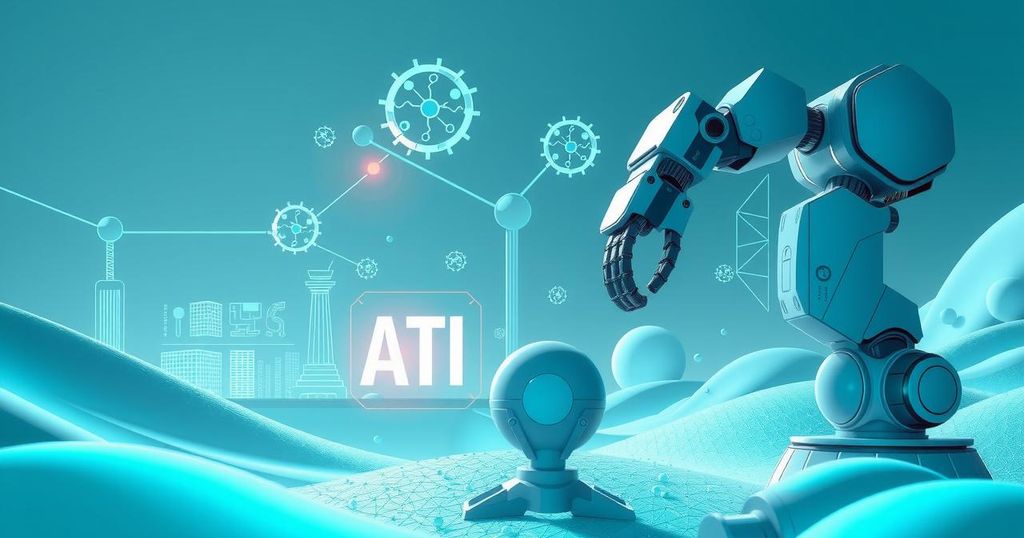Nvidia Charges Ahead in Real-World AI Applications Across Industries
Nvidia is unleashing its artificial intelligence ambitions, with over 70 research papers showcasing “embodied intelligence” in numerous sectors including biotech and transportation. The firm emphasizes real-world applications that could lead to breakthroughs in robotics and drug development. Notable projects include the SRSA system for robotic learning and the Proteína model aimed at accelerating biotech advancements.
Nvidia is stepping up its game in the world of artificial intelligence, diving into research that branches far beyond the usual texts and pictures. In a bold showcase, they’ve released over 70 papers detailing how AI—specifically what they’re calling “embodied intelligence”—can have real impacts on various industries, such as manufacturing, biotech, and transportation. This technology, according to a report from Fast Company, is pivotal for future advancements in robotics, drug development, and self-driving cars.
Bryan Catanzaro, Nvidia’s vice president of applied deep learning, summed up the company’s mission. He stated, “For AI to be truly useful, it must engage meaningfully with real-world use cases.” This philosophy is clearly at the root of Nvidia’s latest push into the AI realm as they look to create practical and transformative applications of their technologies.
At a recent tech conference in Singapore, Nvidia pulled back the curtain on its latest research, covering a range of topics including healthcare, robotics, and large language models. The company’s collaborative efforts in AI are noteworthy, boasting partnerships with major players like Google, GE Healthcare, and GM.
One of their papers introduces Skill Reuse via Skill Adaptation (SRSA), which allows robotic agents to tackle new tasks by leveraging previously mastered skills. This innovation reportedly boosted task success rates by 19% while cutting the need for training data by over 50%. In layman’s terms, it’s about making robots faster and smarter for tasks in logistics and industry.
Turning to biotech, Nvidia has brought forth the Proteína model. This powerhouse has been trained on a whopping 21 million synthetic protein structures, enabling it to create long-chain backbones that can stretch up to 800 amino acids. Strikingly, it has outperformed DeepMind’s Genie 2 in both accuracy and diversity. Nvidia is confident this model could be a game-changer in vaccine development and enzyme design—speeding up processes where time and precision are critical.
In another leap forward, Nvidia unveiled STORM, which stands for Spatio-Temporal Occupancy Reconstruction Machine. It’s a system capable of generating 3D maps in a lightning-quick 200 milliseconds. Such brisk mapping could be crucial for drones, augmented reality systems, and self-driving vehicles trying to navigate tricky landscapes.
On the reasoning front, their Nemotron-MIND project trains large language models to tackle math problems using synthetic conversations. According to the team, models built this way perform better on key benchmarks compared to larger models—all while requiring fewer tokens. It’s an exciting twist in how AI learns and reacts.
These announcements were made during the 2025 International Conference on Learning Representations (ICLR). Nvidia also took this opportunity to debut their Inference Microservices (NIM), a platform that aims to simplify the process for companies looking to deploy advanced AI models without the burden of heavy infrastructure.
In summary, Nvidia is pushing the boundaries of AI with their groundbreaking research spanning various industries. Through innovations like embodied intelligence, skill adaptation in robotics, advanced biotech models, and hyper-efficient mapping tools, they’re solidifying their place in the AI landscape. With their emphasis on real-world applications and strong partnerships, their work is a promising glimpse into the future of technology. As the AI arms race heats up, Nvidia’s latest developments could redefine what’s possible across various fields – particularly in robotics and healthcare, where the need for innovation is profound.
Original Source: www.pymnts.com




Post Comment